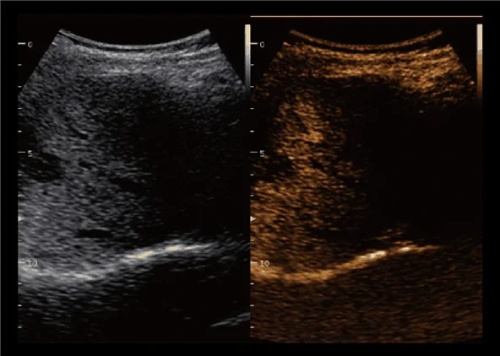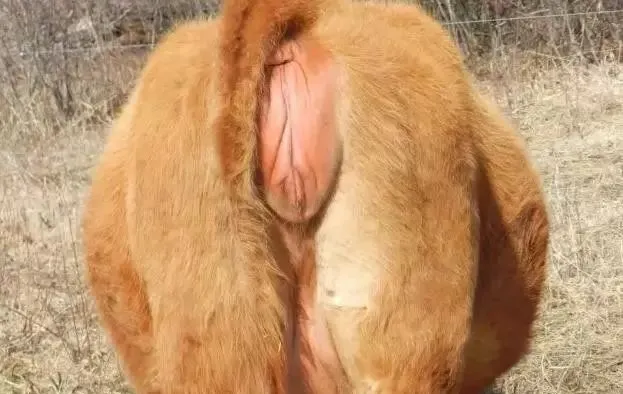When most people think of ultrasound in veterinary medicine, they imagine crisp, black-and-white images that reveal the inner workings of animals—whether it’s a growing fetus, a liver with suspected lesions, or a tendon under stress. But seasoned practitioners know that what you don’t see—or more importantly, what you think you see—can be just as critical. That’s where ultrasound artifacts come in. Far from being mistakes, many of these image distortions offer vital clues or carry specific meanings. The trick is knowing when to trust them and when to dig deeper.

Let’s unpack what these artifacts are, why they appear, and how we can actually use them to our advantage, especially in the field of animal health.
What Are Ultrasound Artifacts, Really?
Think of artifacts as the quirks in the system—unexpected echoes or shadows that appear on an ultrasound screen not because of real anatomy, but because of how sound waves behave in the body. Some are annoying, others misleading, but many are surprisingly useful once you understand them.
Ultrasound doesn’t "see" in the way our eyes do. It relies on sending high-frequency sound waves into the body, then measuring how those waves bounce back. Different tissues reflect sound differently, and the machine translates this into an image. But when the assumptions the machine makes (like that sound travels in a straight line or always at the same speed) are violated, you get an artifact.
The Most Common Artifacts Vets Encounter
1. Reverberation Artifact
You’ve probably seen this: parallel, equally spaced white lines on the screen. This happens when sound bounces back and forth between two strong reflectors—like a metal foreign body and the transducer face. It’s common when scanning animals with surgical implants or even gas in the intestines. Recognizing this pattern can save you from mistaking it for something pathological.
2. Acoustic Shadowing
This is where a dense structure like bone or a stone blocks the sound, casting a dark shadow behind it. Far from being a problem, this can be diagnostic gold. Seeing a clear acoustic shadow behind a mineralized structure can confirm the presence of things like uroliths in goats or pigs.
3. Enhancement Artifact
This is the opposite of shadowing. When sound travels through a fluid-filled structure like a cyst or bladder, it encounters less resistance, making the area behind it appear brighter than expected. In small animal and large animal reproductive scanning, this can help confirm that what you’re seeing is truly fluid-filled—like a follicle or uterine fluid pocket.
4. Mirror Image Artifact
This one trips up many beginners. You may think you see a duplicate organ, but it’s just a reflection—often caused by curved surfaces like the diaphragm. For example, in bovine liver imaging, the diaphragm can create a mirrored "false liver" that appears to sit above the real one. Understanding this saves you from diagnosing a “phantom” liver mass.
5. Edge Artifact
Seen along the curved surfaces of round structures like the bladder or testicles. These appear as refracted shadows along the edges and can be mistaken for cystic walls or tissue separations. Knowing how the beam bends helps you avoid misreading these shadows.
Applying Artifact Knowledge in Clinical Work
Understanding artifacts isn’t just academic. It makes a real difference in diagnosis and decision-making, especially in field conditions.
➤ Pregnancy Diagnosis in Livestock
When checking pregnancy in cows or ewes using transrectal ultrasound, recognizing enhancement artifacts can confirm that the visible black area is indeed a fluid-filled gestational sac—not just gas or intestinal contents. If you’re using a high-resolution scanner like the BXL-V50, which has excellent sensitivity to fluid-tissue transitions, the brightness behind fluid can help validate what you're seeing, especially in early pregnancy where details are subtle.
➤ Detecting Foreign Bodies
In dogs and cats, swallowed metallic or mineral foreign bodies often produce a clean reverberation or shadow. These artifacts help differentiate between ingested plastic (which may not show up well) and denser materials like stones or needles.
➤ Lung Scanning in Calves or Foals
Lung ultrasound is growing in popularity for detecting pneumonia. But you’ll almost always see artifacts—comet tails, B-lines, mirror images—especially if there’s fluid or consolidation. Here, artifacts are not mistakes; they’re the signs you rely on to detect disease. A clean, artifact-free lung image might actually be a bad sign, indicating air where fluid is expected.
When Artifacts Mislead
Not all artifacts are useful. Some, like side-lobe artifacts (where echoes come from off-center beams) or speed displacement artifacts (where tissues appear to shift position), can confuse even experienced users. Misreading these can lead to misdiagnosis—thinking you see a second fetus when there’s only one, or assuming a lesion is larger than it actually is.
This is why probe handling, machine settings, and animal positioning matter just as much as image interpretation. Consistent angles and good gel contact go a long way in reducing misleading artifacts.
How to Train Your Eye to Spot Artifacts
Here are a few practical tips I’ve learned from both experience and conversations with fellow veterinarians:
Scan from multiple angles: If the structure moves or changes dramatically when you tilt the probe, you’re likely dealing with an artifact.
Use Doppler when possible: No blood flow in a suspected structure? It might be an artifact, not real tissue.
Compare bilaterally: If something appears on one side but not the other in a symmetric organ, question it.
Record and review: Save short video loops. Artifacts often become clearer when reviewing frames one by one.
The Hidden Value: Teaching and Communication
Artifacts are also a powerful teaching tool. Whether you're training interns, farm staff, or even clients, showing what an artifact looks like (and what it means) helps build understanding and trust. Farmers who see a fetal heartbeat or a shadow behind a bladder stone are far more likely to trust your diagnosis when they understand the “why” behind the image.
Why This Matters in Livestock Management
In large-animal settings, efficiency is everything. Scanning a dozen cows in an hour isn’t unusual—and mistakes due to misread artifacts can mean mistimed breeding, missed disease, or incorrect culling decisions. That’s why the combination of good hardware, like the BXL-V50, and artifact literacy is so valuable.
For instance, identifying a false positive pregnancy due to intestinal gas shadowing can prevent months of wasted feed and reproductive planning. Or, recognizing a true cyst versus a reverberation pattern can change your entire hormone treatment plan in goats or cattle.
Future of Artifact-Aware Imaging
As Veterinary ultrasound technology evolves—adding AI-assisted imaging, contrast agents, and better image processing—some artifacts may be reduced automatically. But others will always exist, simply because of the way sound interacts with living tissue. Learning to read them not only makes you a better clinician but gives you an edge in delivering faster, more accurate care.
Veterinary schools are starting to emphasize this more, and manufacturers are building systems with better artifact handling and clearer displays. Devices like BXL-V50 are already integrating real-time optimization tools that help reduce noise while keeping diagnostic artifacts visible.
Final Thoughts
In vet ultrasound, not everything on the screen is what it seems—but that doesn’t mean it isn’t useful. Understanding and applying artifact interpretation is a skill that grows with every scan, and it’s one that can make all the difference in animal care, especially in time-critical or rural settings.
So the next time your screen shows something odd—don't dismiss it. It might just be telling you something important.








